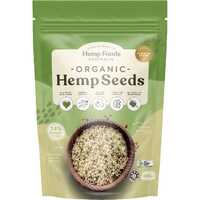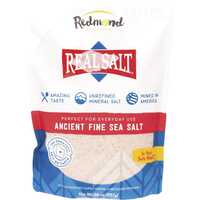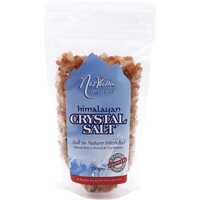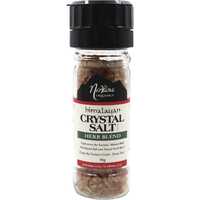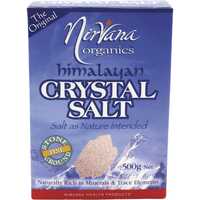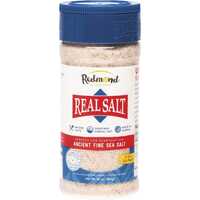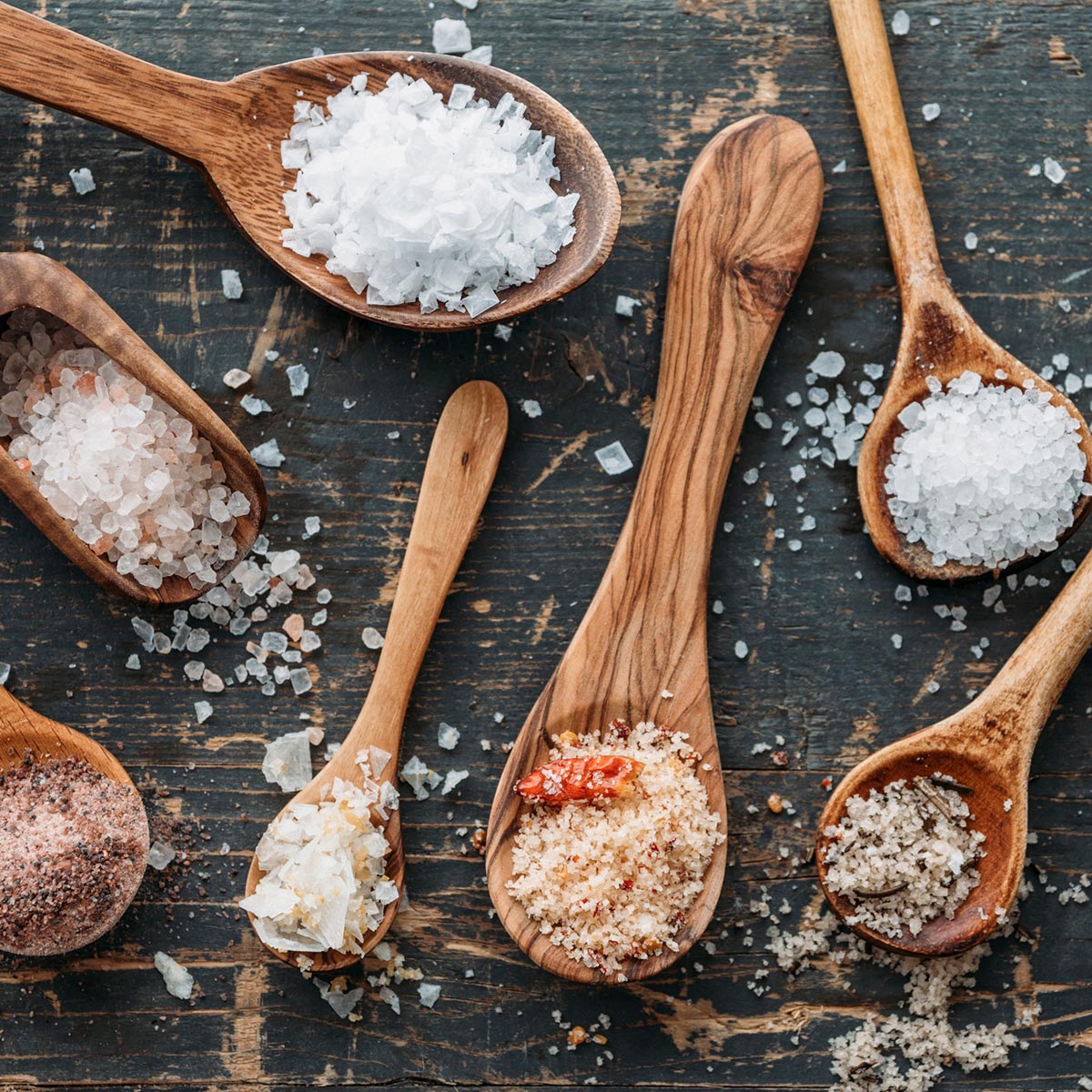When it comes to food, there's nothing more basic and elemental than salt. This natural mineral is composed mostly of sodium chloride, and it's found in seawater and crystalline structures across the planet. Salt is essential for life, inherent to flavour, and one of the oldest foods in the known world. As the most basic of all human tastes, salt is found everywhere in various formations and qualities.
Let's take a deep dive into the wonderful world of salt, including its history, variations, and health implications. When we consume good-quality salt in the right quantities and combinations, we can enjoy ancient taste sensations and experience beneficial health outcomes.
What is Salt?
Salt is a chemical compound (sodium chloride or NaCl) that consists of 40% sodium and 60% chloride. Natural crystalline salt is known as rock salt or halite, and seawater salt is present in waterways around the world. Sodium is an essential nutrient for human health, and salt is the primary source. Along with pure salt, you can get sodium from a number of foods, including vegetables like celery and beets, and dairy products such as cheese and milk. Other great sodium-rich foods include clams, pickles, sunflower seeds, and black beans.
While salt is essential for life, excessive salt consumption has been linked with a range of negative effects. Too much salt can increase the risk of cardiovascular diseases, including high blood pressure, heart disease, and stroke. Excessive salt levels have also been linked to kidney and brain disorders, along with damage to other organs. Numerous health organisations advise people to limit their salt intake. The World Health Organisation recommends that adults consume less than 2000 mg of sodium, or 5 g of salt, per day.
Along with its chemical definition, saltiness is one of just five basic tastes. Along with sweetness, sourness, bitterness, and umami, salt is essential to how we experience food. Salt is a flavour “potentiator,” which means it doesn’t add much flavour of its own but brings out desirable flavours in other foods. Contrary to popular belief, however, these basic tastes don't always have a unique molecular and cellular sensory mechanism. While everyone knows what salt tastes like, scientists are just starting to understand how and why we experience saltiness the way that we do.
Types of Salt
Despite extensive variations in commercial products and naming conventions, all the salt in the world comes from either the land or the sea. The following division is useful:
- Underground deposits are used to mine salt products, including table salt and regional variations. Table salt is a highly refined earth-based salt typically mined from commercial salt deposits.
- Sea salt comes directly from evaporated sea water, with variations harvested in different parts of the world. Sea salt products have a variety of names based on their origin.
For something as simple as salt, there's surprising variation when it comes to salt types. From basic table salt to sea salt, pink salt, and black salt, the following edible salts are common across much of the world:
- Table salt is a refined salt that's purified of trace minerals and rehydrated for uniformity. This salt is mined from salt deposits.
- Kosher salt is a refined salt with larger crystals and no additives. It's mined from the ground and has a light coarse texture.
- Celtic salt or fleur de sel comes from France, where it's harvested from the top of saltwater ponds as they crystallise.
- Himalayan salts come from ancient mountain deposits. The two most popular variations are pink salt and black salt.
- Volcanic Hawaiian salts are also popular around the world, including red salt with iron oxide and black lava salt.
While there are small differences in taste between salts, most variations are due to origin, size, and texture. Salt crystals can take on many shapes and densities, and they also stack together in different formations. The various names we give to salt products refer to a range of factors, with "rock salt” referring to size, "pink salt" referring to colour, and "sea salt" describing harvesting methods. While table salt and sea salt have a similar chemical makeup and nutritional value, sea salt is much less processed and retains many more secondary minerals.
The History of Salt
According to Roman naturalist and philosopher Pliny the Elder, author of the first encyclopedia, “a civilized life is impossible without salt.” While this might seem overstated at first glance, it's actually pretty close to the mark. The availability of salt has been pivotal to all human civilisations, with different peoples using it to preserve meat, flavour food, and trade with other cultures.
The first city in Europe, Solnitsata in Bulgaria, was a working salt mine. This city provided the Balkan region with salt since 5400 BC, with its name actually meaning "salt works." The existence of salt mines allowed ancient peoples to look beyond their immediate needs and build relationships with their neighbours. While modern cultures rely heavily on canning techniques and refrigeration technology, salt is the oldest and most important food preservative.
The earliest evidence of salt processing is over 8,000 years old, which is when peoples in present-day Romania boiled spring water to extract salts. A saltworks in China dates to roughly the same period, and practically every culture since then has continued to harvest and consume salt. Salt was loved by the ancient Hebrews, Byzantines, Egyptians, Greeks, Romans, and Indians, among other civilisations. It was influential to trade, used to build ancient roads, and central to religious ceremonies around the world.
The anti-salt movement is relatively new, with the promotion of a low-salt diet arising in parallel with increased levels of salt intake. Salt consumption grew slowly due to population growth and changes in agriculture, with its use as a food preservative leading to increased availability and intake. Our salt consumption today is 10-20 times greater than it was 5,000 years ago, which is potentially very problematic. While salt itself is not bad, like many things in life, moderation is essential to avoid unhealthy outcomes.
The Benefits of Salt
Salt often gets a bad rap, with too much of it known to increase the likelihood of numerous cardiovascular conditions. This "truth" is far from clear-cut, however, with a meta-analysis of more than 6,000 patients finding no real link between salt intake, high blood pressure, and risk of heart disease. Like many other dietary recommendations, our beliefs around salt intake should be critically examined and regularly re-evaluated.
Salt can also be beneficial to your health — in fact, it's absolutely essential to human survival. Insufficient salt intake has been linked to headaches, muscle cramp, irritability, and cognitive decline in the elderly, among other conditions. Somewhat counterintuitively, it can also lead to a higher risk of heart attack. At best, links between salt intake and cardiovascular disease are widely inconsistent.
When eating salt, it's important to consume the right type and amount of salt. It's also essential to combine it with a healthy diet and exercise regime. When consumed in this context, salt offers the following advantages:
Hydration
Your body needs a measured balance of sodium and potassium in order to stay hydrated. The water in your body follows sodium, with potassium also needed to avoid water retention. In simple terms, this is why sea salt is much better for you than table salt. Popular sea salts such as Celtic salt or pink Himalayan salt contain balanced levels of sodium and potassium.
Vascular health
Based on some studies, sea salt may offer some protection against heart disease. While table salt is much less beneficial due to its shallow mineral profile, sea salt may assist with hypertension. This directly contradicts some of the health advice given over recent decades. But, once again, it depends heavily on the type and amount of salt that you consume.
Electrolytes
Sea salt is a fantastic source of electrolytes, which help to prevent muscle soreness and cramping. With a balanced profile of sodium, magnesium, potassium, and calcium, sea salt is a great way to support your body during exercise and throughout the recovery phase. Lack of electrolytes has been associated with irregular heartbeat, nausea, fatigue, and seizures.
Nervous system
As mentioned above, salt helps to regulate water flows throughout the body, which aids with nervous system health. Water is also required for electrical conduction, with salt helping your body to send and receive nervous system signals. From your extremities to your brain, your body works best with the right balance of sodium and other electrolytes.
Regulation
Salt has been found to regulate certain hormones, including aldosterone and glucocorticoids. Among other things, these hormones are linked to water retention and food digestion. While we're often told to eat less salt, it actually helps to control our metabolism. Along with better regulation, salt consumption may make you feel less hungry, less thirsty, and more satisfied when you eat, which can be positive for weight management.
Healing
Salt water is known to accelerate tissue healing, and magnesium-rich water helps to reduce tissue inflammation. This is one of the traditional uses of salt, and it's just as powerful today as it was thousands of years ago. Salt water is great for cleaning wounds, treating some rashes, and washing the mouth after teeth cleaning, among countless other applications.
If you're looking for a great source of high-quality salt in your diet, Healthy Being has everything you need and more. We have lots of fantastic salt products available at low market prices, so you can say goodbye to common table salt once and for all. For great products, low prices, and friendly customer support, check out our website today!


 Certified Organic
Certified Organic Vegan Friendly
Vegan Friendly  Vegetarian
Vegetarian Organic Ingredients
Organic Ingredients Dairy Free
Dairy Free Gluten Free
Gluten Free Keto Friendly
Keto Friendly
























